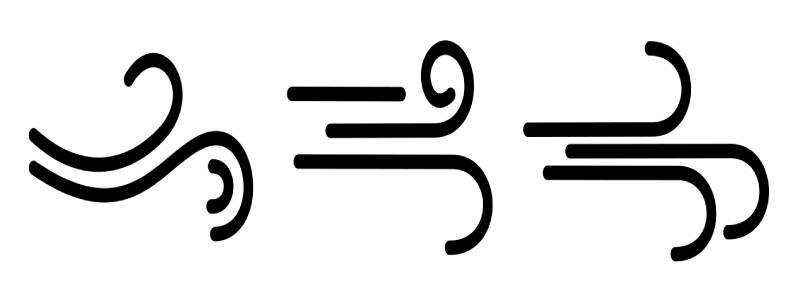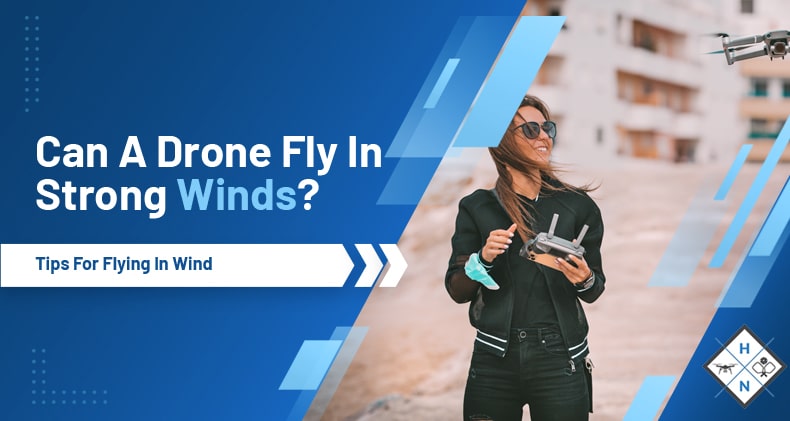The day you will be able to fly your drone has arrived. You have prepared everything in advance, the equipment is ready, and you are ready. Then, you look out of the window and see that the wind is moving the branches of the trees. You feel a bit frustrated with all this wind, but you still want to fly your drone. Before making a decision, you wonder, is it possible to fly my drone in high winds?
Technically it is possible to fly drones in strong winds. However, it all depends on the model and technical characteristics of each drone. The fundamental rule is that you should not fly a drone in winds equal to or greater than two-thirds of its maximum speed.
When you decide to fly a drone in strong winds, you can face some challenges. The reality is that flying a drone in these conditions may not be an enjoyable experience. It can even be a dangerous activity. But we know there will always be operators who decide to fly despite the weather conditions. If you are one of them, continue reading. In this article you will find many important things to know about flying your drone in high winds.
What Are The Types Of Wind That A Drone Can Encounter?
Wind is the movement of air. It can be a very gentle breeze, as it can also become tornadoes and hurricanes. Due to this wide range of factors, we have listed some of the winds we usually encounter when we fly drones.
- Planetary winds. These are the winds that blow throughout the year from one end of the earth's atmosphere to the other. They occur due to differences in atmospheric pressure.
- Thermal winds. These are winds that can be very strong. They appear when the sun heats the air on the ground.
- Local winds. Differences in temperature and air cause these winds. This type of wind has four subtypes: warm, cold, slope, and convective.

How Can You Know The State Of The Wind Before Flying A Drone?
We can feel when the wind is strong when we see things moving or feel it blowing more violently through our hair. However, these perceptions about wind speed are not accurate.
The exciting thing about this is that after being attentive to weather conditions and carefully observing their changes, our perception and criteria become aligned with reality. However, we should not worry if we do not have this ability developed yet. There are instruments we can use to measure the wind accurately.
An example of this is meteorologists. Their job is to measure wind speed and direction using some of the instruments that experts designed for this purpose, such as:
The Anemometer
This instrument measures wind speed. This tool is a useful device for both homes and weather stations. The anemometer consists of cups that catch the wind and make it rotate. This rotation speed is what makes it possible to measure the wind speed. It is important to note that the anemometer measures the wind speed at the height at which we place it. This fact means that at higher altitudes, the wind speed can be different.
Applications For Computers And Phones
Today many applications tell us the current state of the wind. They are high-tech tools that also tell us the wind direction, nearby clouds, and more relevant information about the wind state. If you are a recreational drone operator, this tool will be handy.
How Do You Fly A Drone In Windy Weather?

We have seen so far that flying a drone in windy weather is not a good idea. However, it may be that you're already dedicated to it anyway, so in that case, it's best to take specific measures to make the experience go as smoothly as possible. Here are some tips for flying in high winds.
- You should check the specifications of the equipment.
- You should make sure to fly with the drone's battery at its maximum charge. There is no need to take unjustified risks.
- When taking off, it is good to fly the drone in the same direction the wind is blowing. This way of flying will make it easier to return the drone when landing.
- When there is a strong wind, you should fly the drone away from people, trees, and buildings. This recommendation applies to any flight, but even more so during high winds. If you happen to lose the drone's signal, you don't want it to land on anyone or anything.
- Before flying, it is best to set the controllers to respond smoothly to commands. In high winds, you don't want to make any sudden movements.
- When flying conditions are adverse, it is best to fly lower than usual. The wind speed increases at higher altitudes. While closer to the ground, the drone will only experience a strong breeze. Experts do not recommend going higher than 40 to 50 meters.
- People recommend flying over an area that is wide and open. This place will allow recovering the drone quickly if we have to make an emergency landing.
- The best landing technique is with the front part of the drone facing the wind; this will avoid possible damage to the structure of the equipment.
- You must always keep the drone in sight when flying in strong winds.
- When flying, the reaction to control signals will likely be slow.
- If possible, use a drone model that is fast and strong so that it can be more resistant to high winds. It is not a good idea to use small drones, as the wind force will shake them, and you will lose control.
- These particular wind conditions ensure that the battery will drain much faster. This fact forces the flight time to be shorter than usual.
How Windy Is Too Windy To Fly A Drone?
The wind intensity that a drone can withstand will depend on the size and model of the drone. Most commercial drones will be able to fly in winds ranging from 10 mph to 30 mph. But the model and the size will determine it. The maximum speed of the drone is another factor that will decide which wind speed you can fly.
We must remember that the fundamental rule to know the maximum wind that a drone can withstand is that the wind cannot be equal to or greater than two-thirds of the drone's top speed.
This rule means that if a drone has a maximum speed capacity of 16 mph, the maximum wind with which to fly this equipment is 10 mph. A good indicator of whether a drone can withstand the wind is its size.
Large Drones
- They have larger, better-designed propellers with greater strength.
- Their flight capability is more stable.
- They can fly in winds up to 30 mph.
Small Drones
- Small drones are better equipment for flying in normal wind conditions.
- They can fly in winds up to a maximum of 15 mph.
What Wind Speed Is Dangerous For A Drone?

On this subject, we can find different points of view or opinions. Some experts say that the maximum wind with which to fly a drone without any danger is 25 mph. In contrast, other experts say that the top wind speed is 35 mph. In any case, the two aspects that you should consider to make the right decision are:
- The model and the technical specifications of the drone.
- The two-thirds full speed rule.
A Final Thought About Flying A Drone In Strong Wind
If you have finally decided to fly your drone when there is a strong wind, you should prepare yourself and take all necessary precautions. Don't fly too high, don't get close to people or objects, don't fly over water or against the wind are just a few of the things you could do.
Remember to make sure you have a battery at maximum capacity, as the strong wind will consume it much faster. Make the two-thirds rule calculation, and don't take unnecessary risks. If you follow all these indications, you can achieve an intense, exciting and safe flying experience.
Further Reading: Mavic Mini 2: How Far Can It Fly, Specifications, And More!
Shawn Manaher loves to play with new toys and dive into new hobbies. As a serial entrepreneur, work definitely comes first but there is always room for hobbies.

